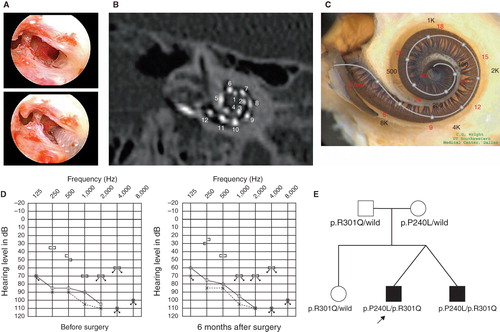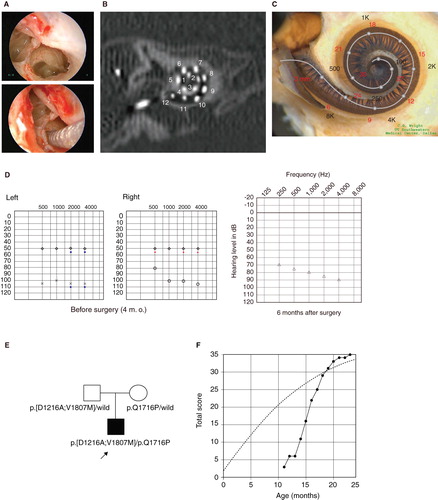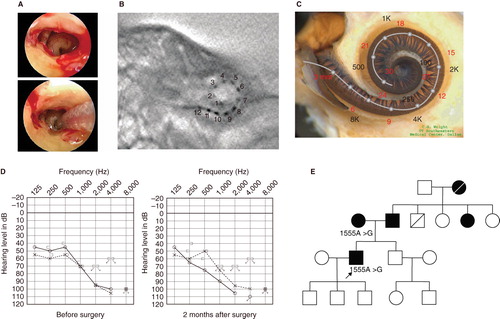Figures & data
Table I. Clinical features of subjects in study.
Figure 1. Case no. 16. (A) Endoscopic view of round window insertion, (B) montage CT image, (C) imaging with putative location of electrode and the referential tonotoic map, (D) preoperative and postoperative audiograms. The image of human cochlea neural tissues stained by osmium tetroxide used in ,,, was kindly provided by Dr C.G. Wright, USWT, Dallas, USA (red, mm from round window; black, corresponding frequency). (E) Pedigree and the mutations found in the CDH23 gene.

Figure 2. Case no. 17. (A) Endoscopic view of round window insertion, (B) montage CT image, (C) imaging with putative location of electrode and the referential tonotoic map, (D) preoperative and postoperative audiograms. (E) Pedigree and the mutations found in the CDH23 gene.

Figure 3. Case no. 18. (A) Endoscopic view of round window insertion, (B) montage CT image, (C) imaging with putative location of electrode and the referential tonotoic map, (D) preoperative ASSR findings (blue, left; red, right) and postoperative COR audiogram finding. (E) Pedigree and the mutations found in the CDH23 gene. (F) Auditory behavioral development assessed by LittlEARS® Auditory Questionnaire. The development curve shows rapid improvement in auditory behavior reaching the curve of normally developed children.

